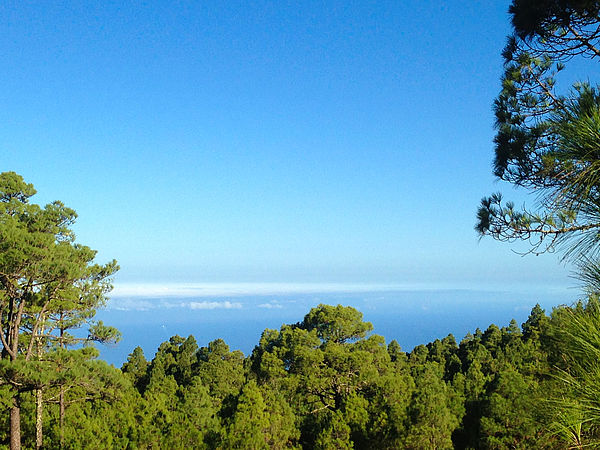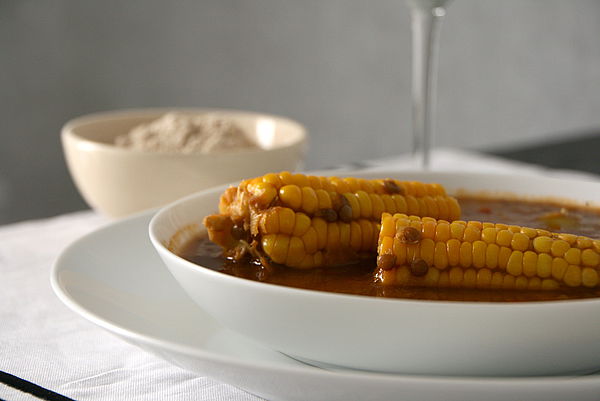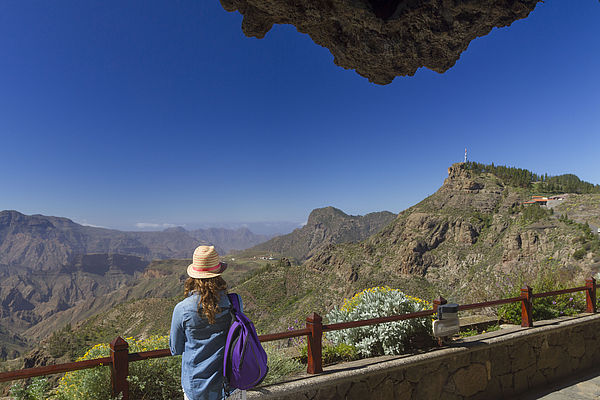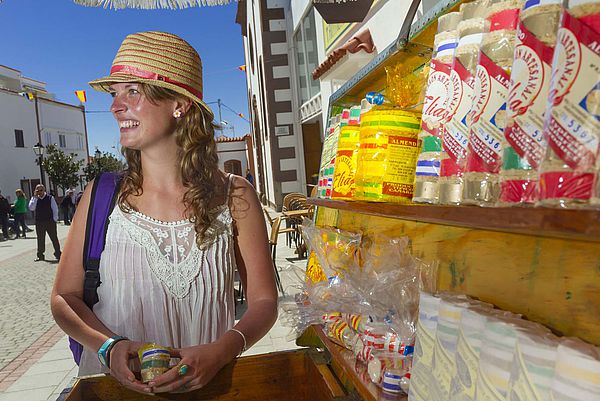The highest town on the island, Artenara, sits on top of an eminently mountainous municipality, on an island full of mountains. It is a small town with stunning and spectacular views, with many dispersed pockets of population dotted around its territory, chiefly in house caves, surrounded by potato and maize orchards. Here, you simply must try the cheese, and if it accompanied by a pork and vegetable stew, you are in for a treat, whether it be in summer or winter, as here there is a noticeable difference in seasons, although just the two of them as the islanders will point out.

It is not just the cattle all around to make these wonderful cheeses, but also – depending on the time of year – its lands serve as routes for the last remaining migratory flocks left on the Canary Islands. These settle to the north, which, in terms of an island of such reduced dimensions as this, is the same as saying “a bit further up there, over the next gully”, as our eyes focus in the distance about two hours away on foot.
In this case we are talking about sheep, while their shepherds now number barely a dozen. In the summer they go in search of grazing land in the neighbouring peak town of Tejeda, while in winter they eat to their hearts content inthe villages around the north, where they are from (Gáldar, Guía, Moya). And these comings and goings, on their annual migration, begin early in the morning and finish the same day at dusk, “from Artenara the flocks come, munching on grass along the way” in the words of shepherd Carmelo Moreno. How lovely this cheese is, made with the milk of animals, who feed on what nature provides!

Each shepherd will choose his own date for this migration, while some agree to go together and spend the summer with their flocks at the same place. On these days, especially around midday, the fields around Artenara ring to the happy sound of the cowbells announcing the arrival of the sheep. They have changed the tinkly bells for bigger cowbells, which enable the shepherds to hear their sheep more clearly along the ledges between ravines. “But if a member of the sheep family were to die, then the flock would move along in silence, and no bell would be put on them. They would be thrown inside the horse’s saddlebags so they wouldn’t make any noise”, continues the same shepherd, as he remembers a time not so long ago in which the horses helped out with the heavy load, a job now done by modern 4-wheel drives.
If Artenara places its natural grassy larder at the disposal of the migratory flocks at the beginning and at the end of each summer, the winter, blessed with rains, welcomes other visitors to its pine woodlands, who arrive mainly from the capital: mycology enthusiasts.

In the Canaries, except for a few fungi such as desert truffle due to its similarity to the potato, in the past there was never any real tradition of mushroom consumption, even in times when food was scarce. This all changed towards the end of the last century, however, boosted mainly by residents from other parts of Spain who were quite knowledgeable on the subject, including people from Cataluña, or others who had studied cookery and were working in restaurants. This knowledge and passion slowly started to take root.
Pedro Lezcano (1920-2002), was a poet and printer who became President of the Island Government of Gran Canaria in 1991, and was one islander who took an interest and became an expert in mycology. The Pinar de Tamadaba was one of his favourite places to go in search of mushrooms, in this case, níscalos, or “milk caps”: “I’ve got a way of eating them in the woods, I mix them with some bacon. Doing them right there in a barbecue is unbeatable”, he explained in an interview, and Tamadaba has great recreational areas to do just that. The stem would be removed from the níscalos mushrooms making them easier to cook, using bacon as a substitute for oil. Turning them over just once, “they hardly start to go soft and there they are, they are eaten almost crude”, he enthused.
